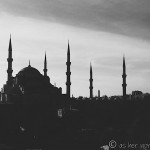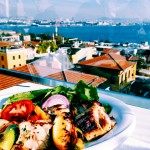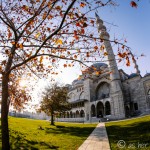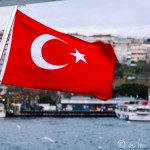Yesterday I shared photos of Suleymaniye Mosque and the Blue Mosque, but this informal mosque tour of Istanbul wouldn’t be complete without a stop at the Hagia Sophia and Topkapi Palace next door.
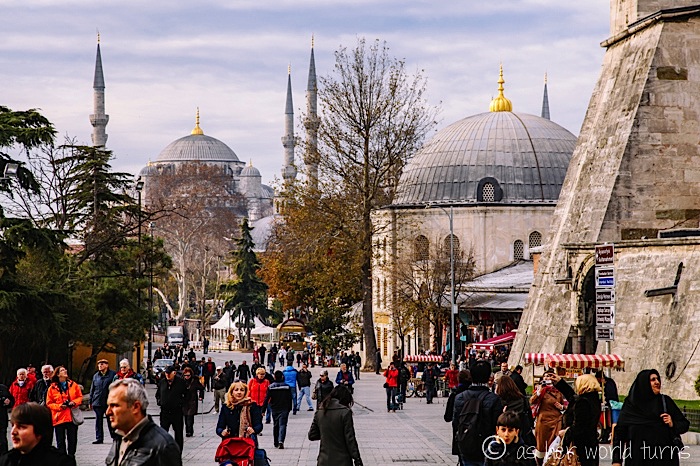
True story: before I saw “Hagia Sophia” spelled out, I thought people were calling it “Eye of Sophia.” Yup. And I graduated college, ladies and gentlemen.
There she is, that Sophia and her Eye:
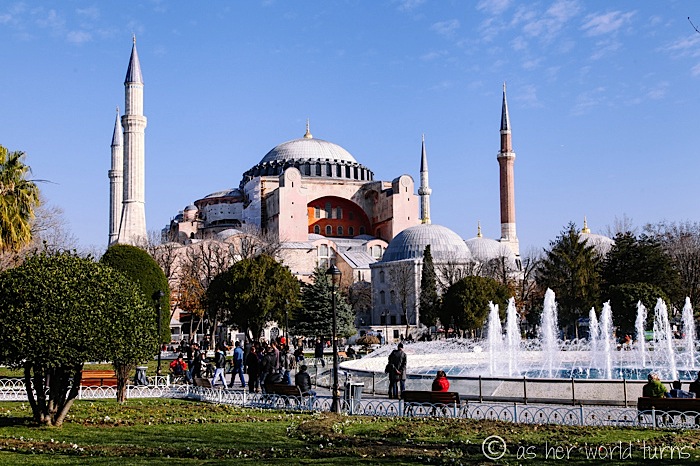
It’s a deconsecrated mosque, meaning that it’s no longer actively used for prayer. Now it’s a museum.
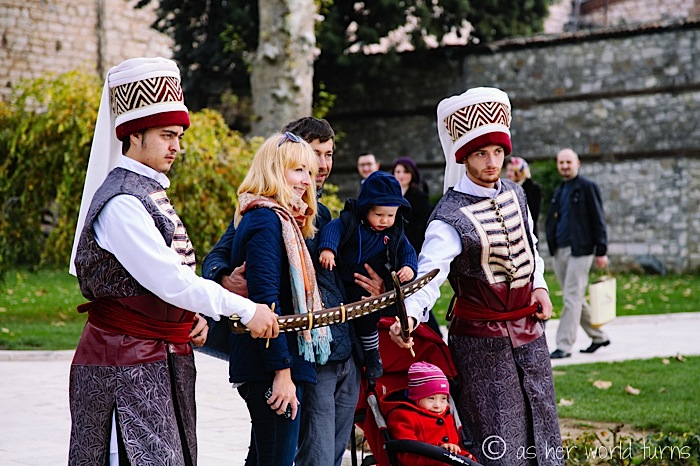
Our visit begins at Topkapi Palace, which was the primary residence of the Ottoman sultans for 400 years. Specifically, we’re here to explore the Harem, which was the private apartment of the sultan and his women. There can be a long wait to enter, so we’re checking this off the list first thing in the morning.
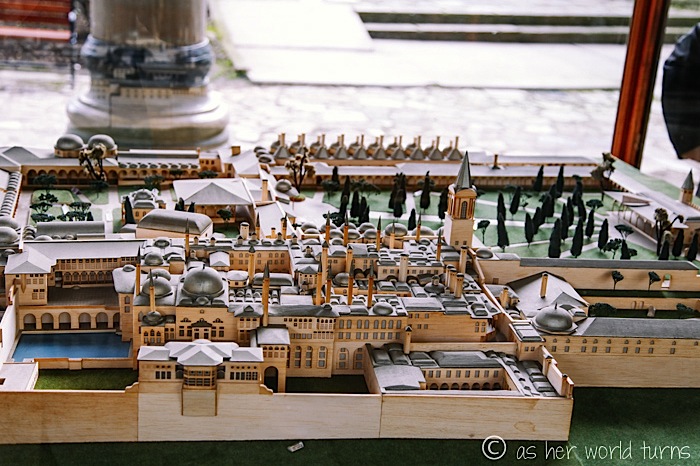
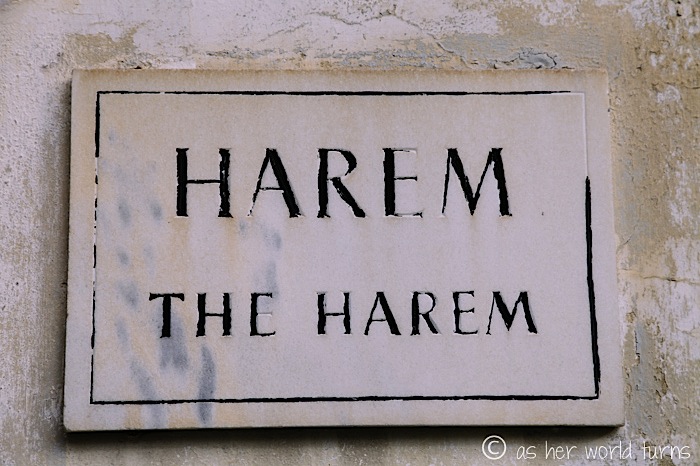
The Harem was guarded by Eunuchs… the castrated servicemen in the Muslim and Turkish states during the Middle Ages.

Beyond the Eunuchs’ dormitory is where the concubines lived — intelligent girls from neighboring countries, introduced at a young age and brought up in the Palace. Those who became sexually involved with the Sultan rose up the ranks.

If you can set aside those disturbing images of young sex slaves and castrated men, there are really beautiful details throughout the Harem. I’m smitten with the colors and patterns — clearly they put significant money and resources into the Sultan’s main living area, and it’s been well-preserved.

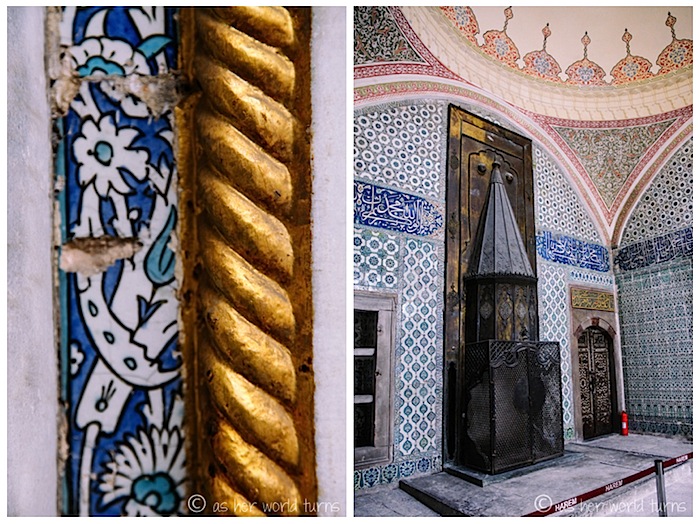


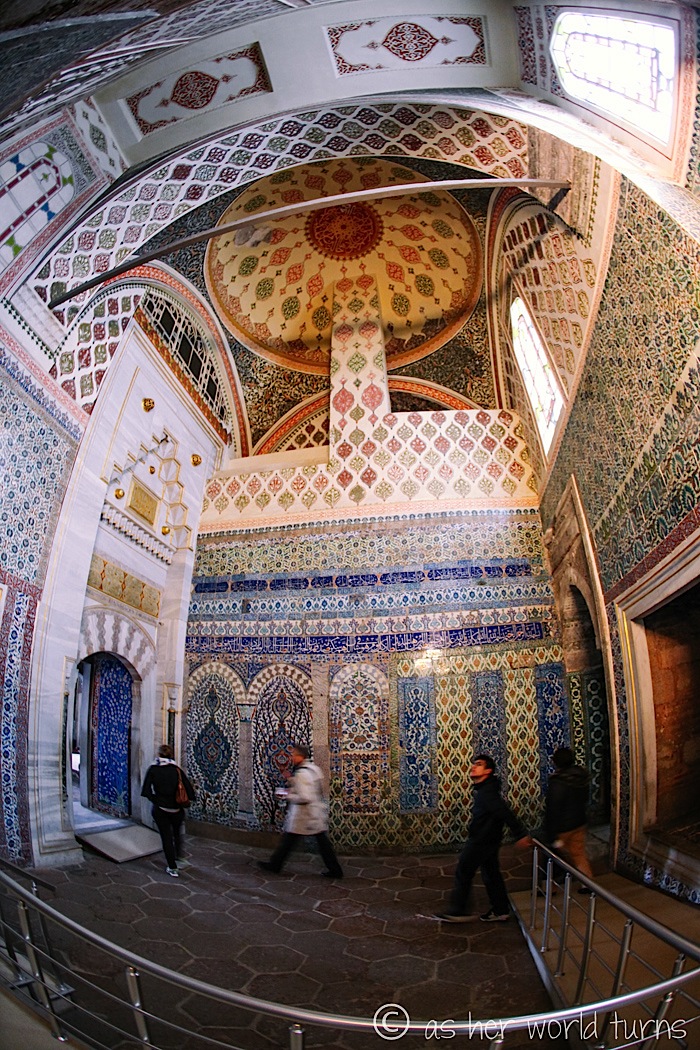
And now we’ve arrived at the Sultan’s main chamber — the most magnificent architectural space within Topkapi Palace.




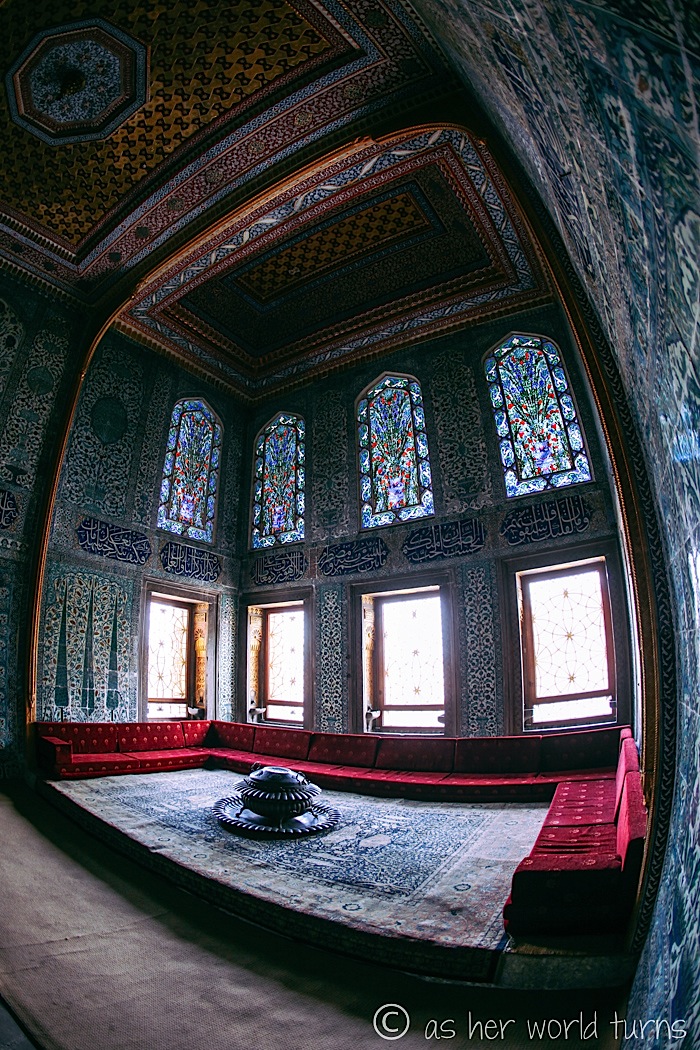
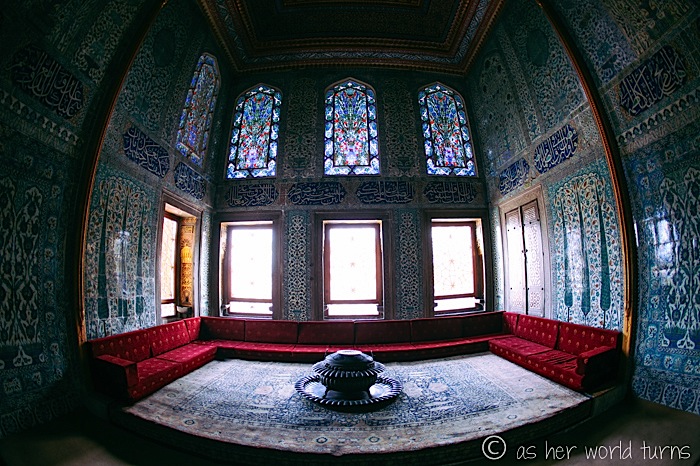
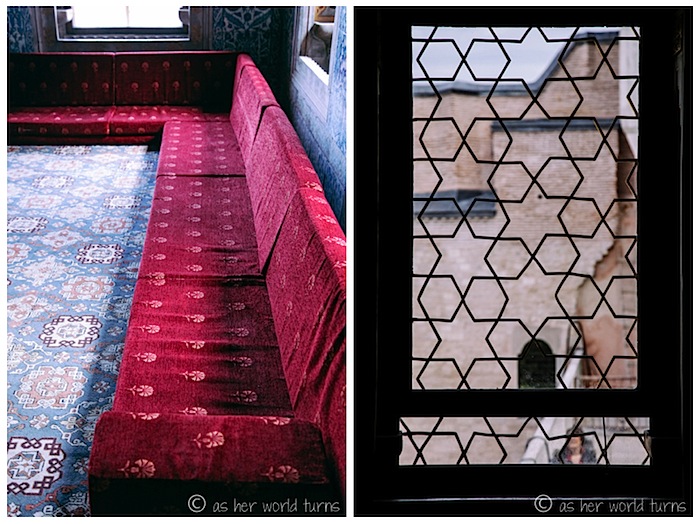
A gold fireplace… I’m enamored with that golden cone-shape over the fireplace.
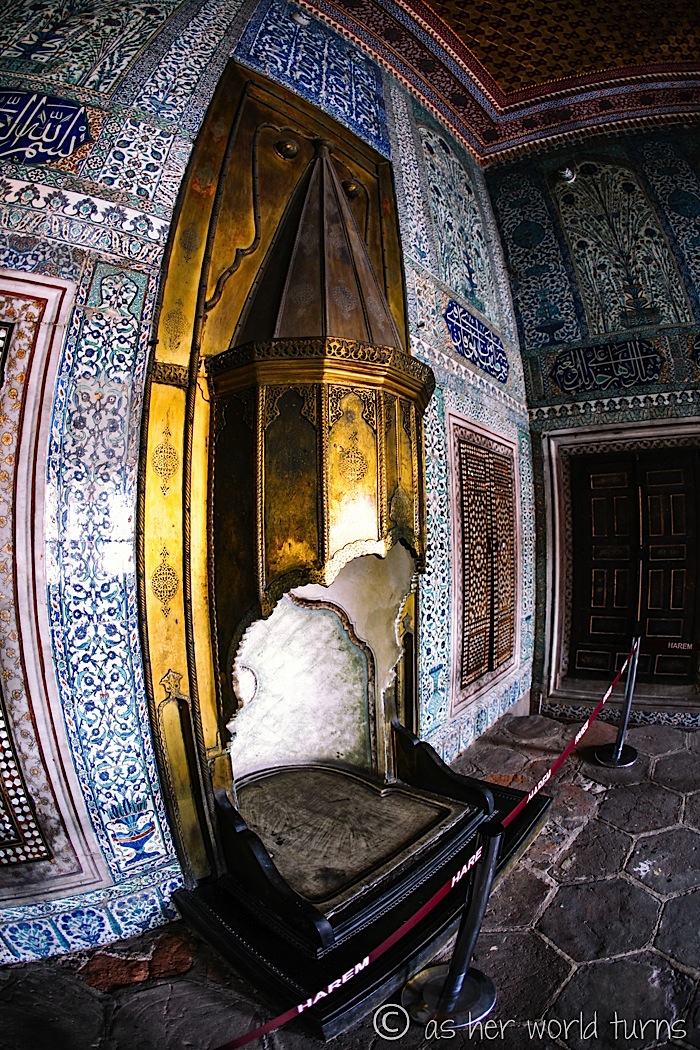
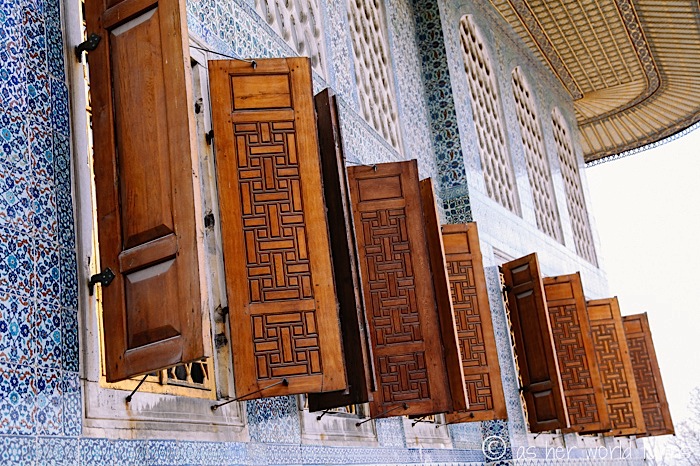
The exterior of the Sultan’s chambers, which used to overlook a pool.
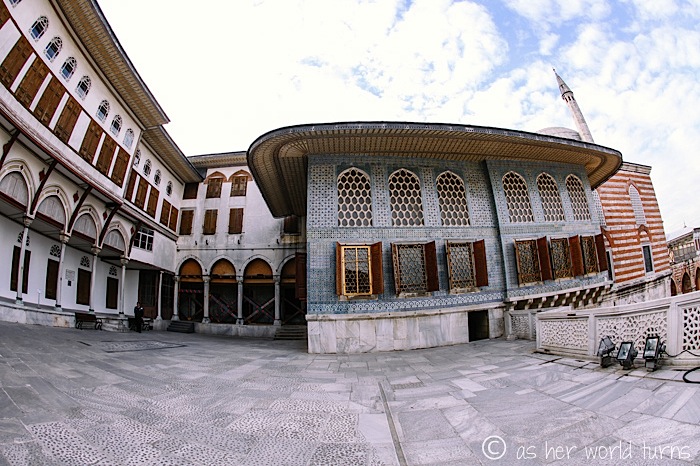
After touring the Harem, we wander the courtyard of Topkapi Palace (and stop in the gift shop) before heading to Hagia Sophia next door.

And here we are… Hagia Sophia:
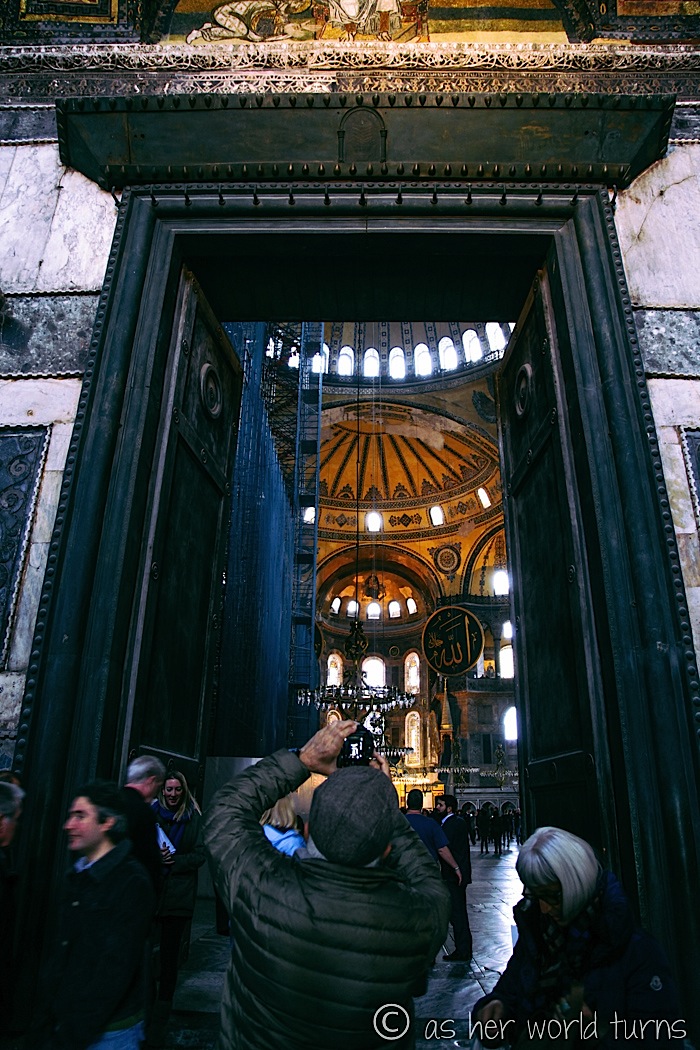
I think this was the first time I saw the name spelled out and realized… oh, I had that way wrong.
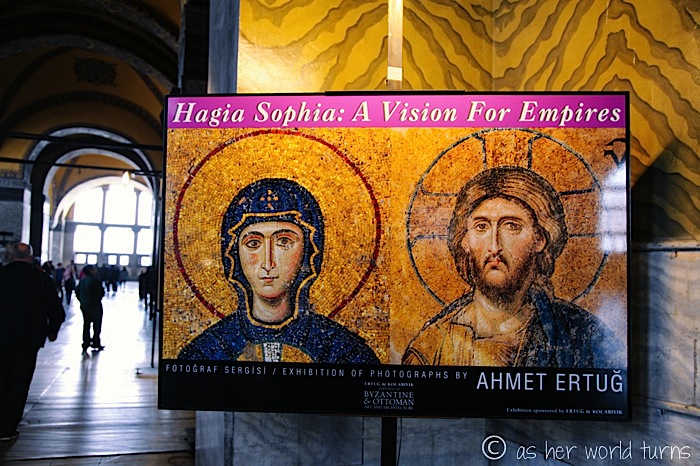
It’s a really impressive space. Since it’s deconsecrated, there are no barriers in place and we’re allowed to wander freely and take photos.

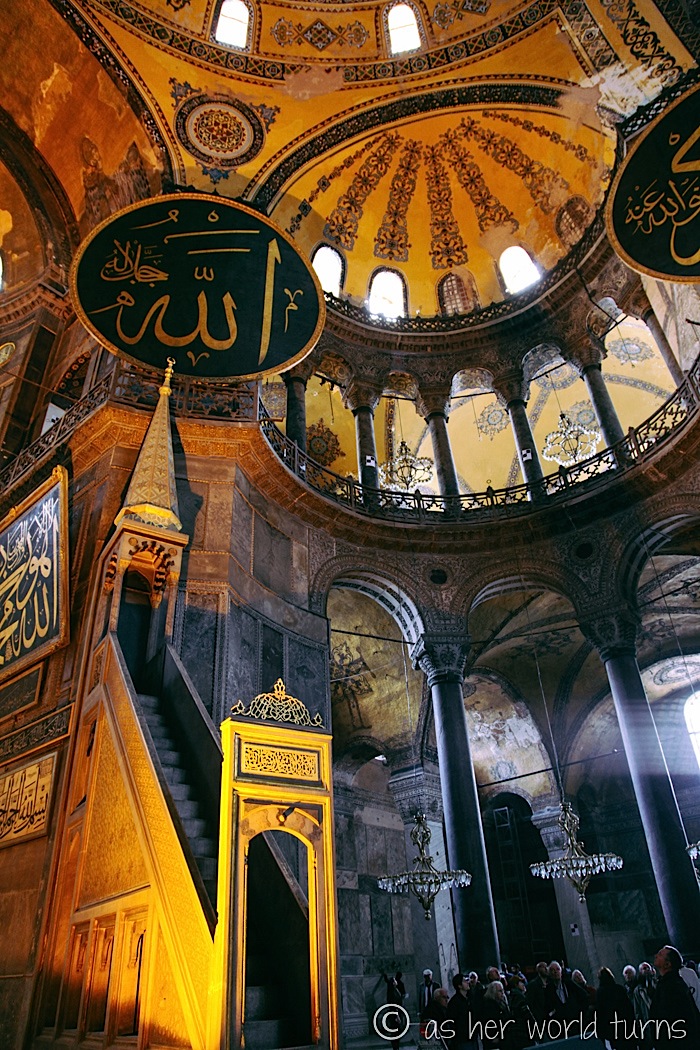
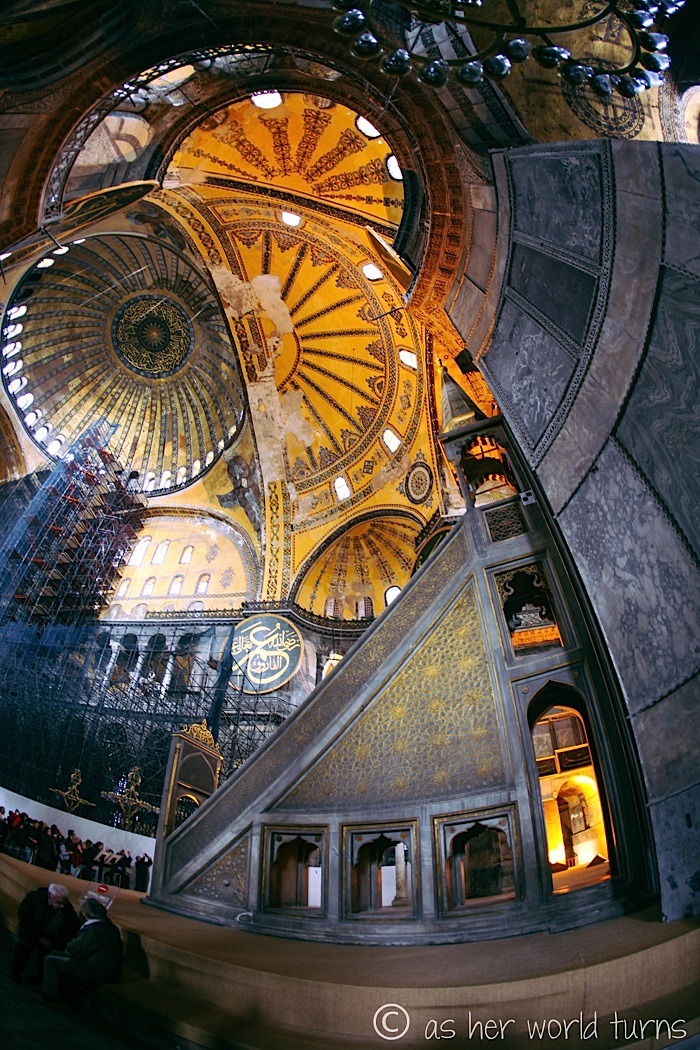
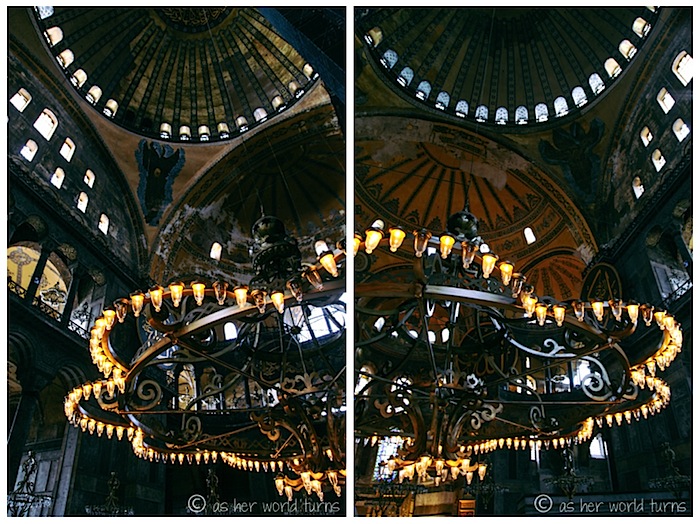

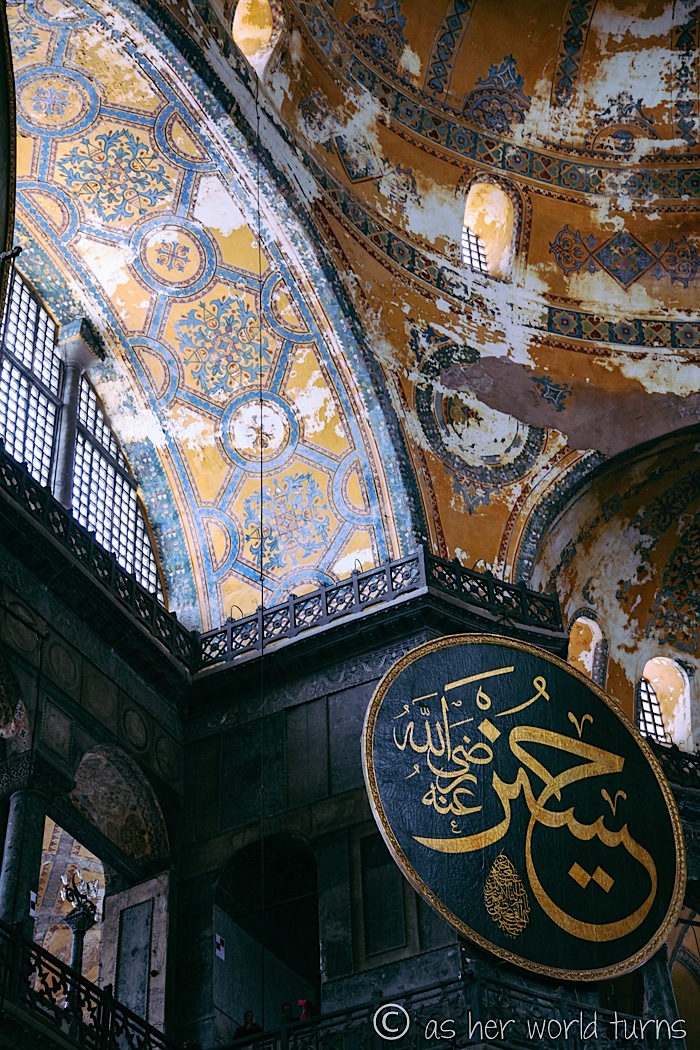
A giant portion is under reconstruction so there’s metal scaffolding in the main area.
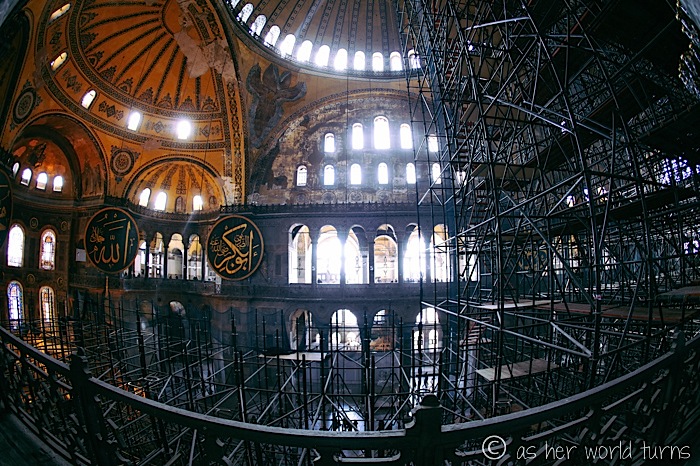

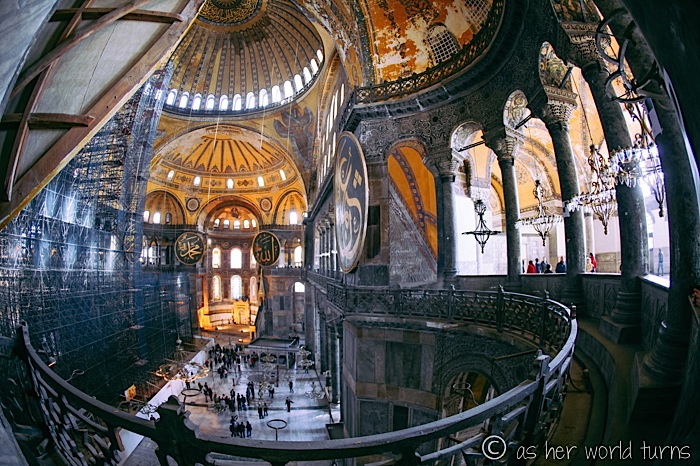

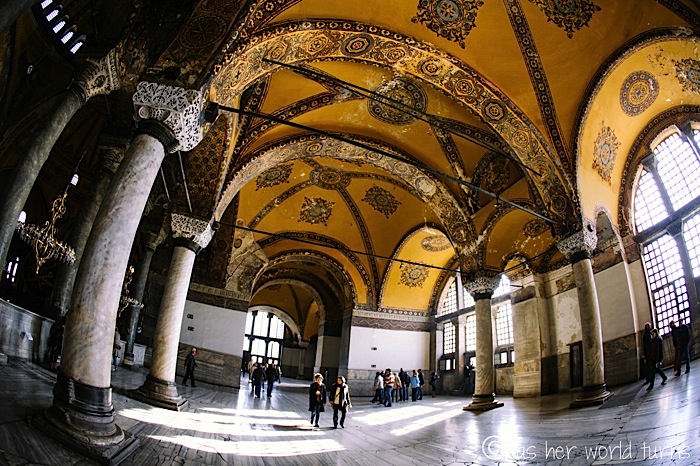
Hagia Sophia’s history is fascinating — it began as a Greek Orthodox church, then became an imperial mosque, and was briefly a Roman Catholic cathedral. So while it primarily feels like a mosque, images of Jesus pop up throughout.

And that’s a wrap on the mosques of Istanbul — thanks for sticking with me! Tomorrow I’ll cover the Grand Bazaar. Practice your bargaining skills to score a good deal on a rug…

